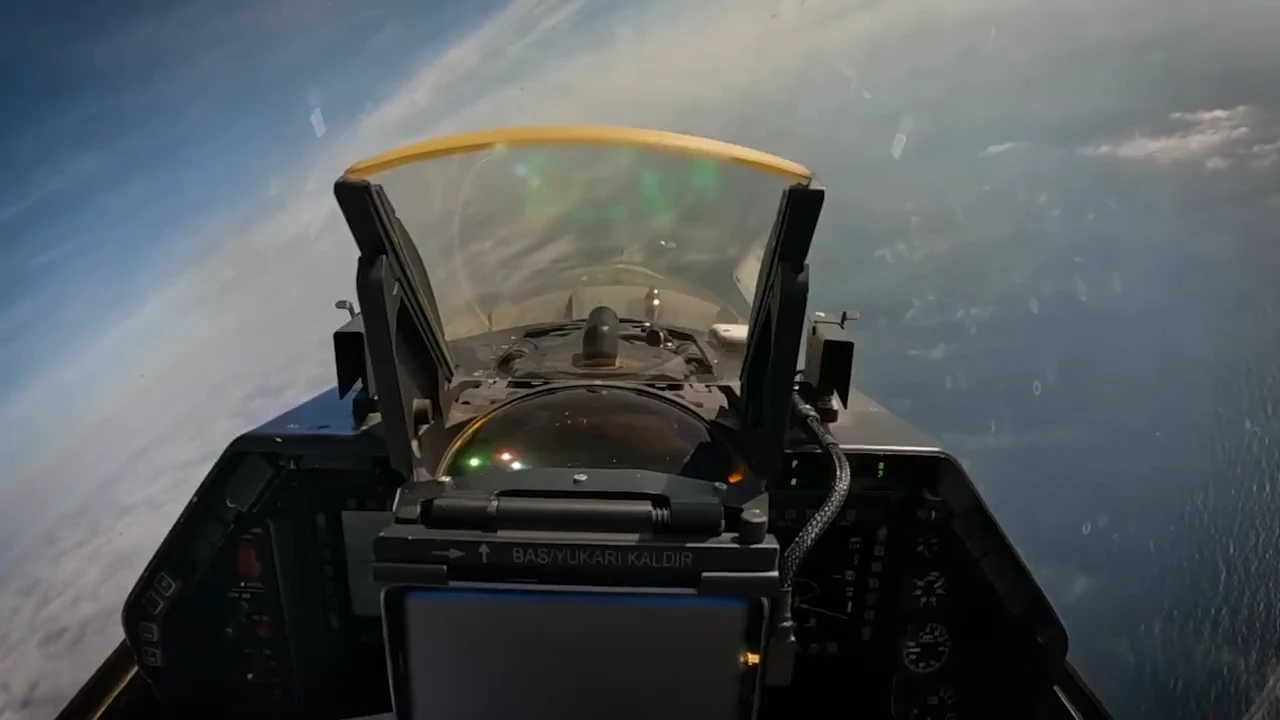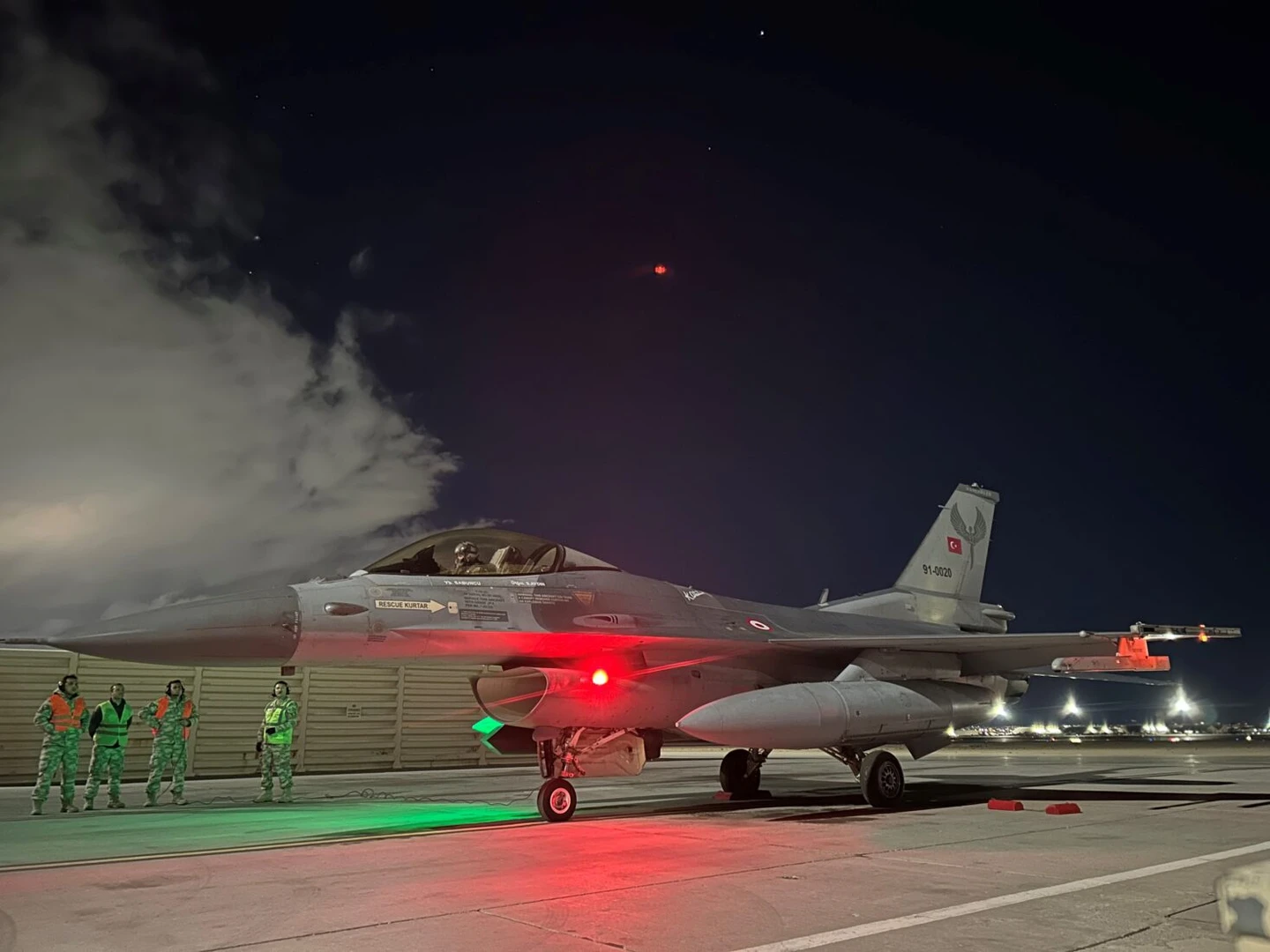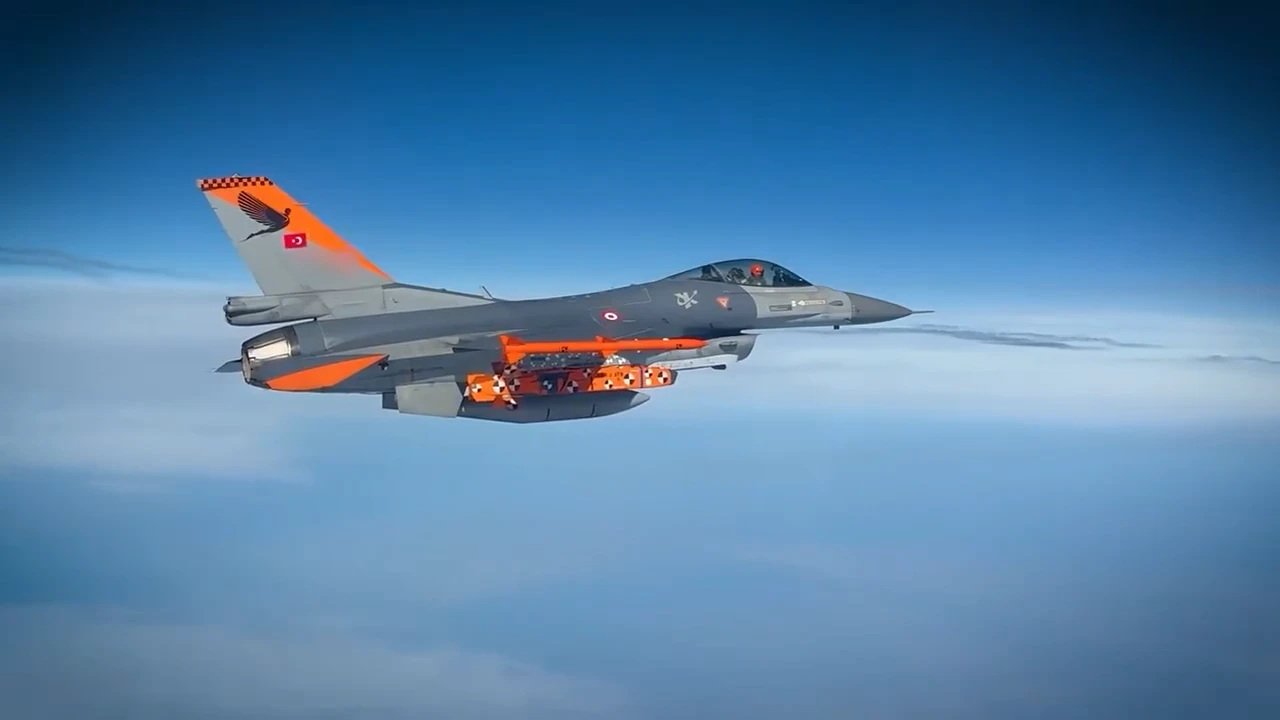Turkish F-16s use tablets to control locally made weapons via UBAS system
 Aircraft Independent Firing System, known as UBAS can be seen during the test of SOM-J cruise missile being tested by the Turkish Air Force's 401st Test Squadron using an F-16 Fighting Falcon jet, video released on 21 March 2025 (Screengrab from video via X / @mfatihkacir)
Aircraft Independent Firing System, known as UBAS can be seen during the test of SOM-J cruise missile being tested by the Turkish Air Force's 401st Test Squadron using an F-16 Fighting Falcon jet, video released on 21 March 2025 (Screengrab from video via X / @mfatihkacir)
Türkiye is using tablet-based systems inside its F-16 fighter jets to operate domestically developed air-to-ground weapons, reflecting a new level of technological autonomy in its defense sector.
The tablet interface is part of the “Aircraft Independent Firing System”, known as UBAS, which allows Turkish-made ordnance to be employed without modifying the aircraft’s core mission software.
A video showing a test launch of the locally developed SOM-J missile from an upgraded F-16C Block 40 aircraft highlighted the presence of a tablet mounted on the Input Control Panel (ICP).
This device, along with a second tablet on the pilot’s knee, supports mission operations, weapons deployment, and navigation tasks.
UBAS enables weapons control without software modifications
UBAS, developed with Turkish mission software, provides an independent interface between the aircraft and new indigenous weapons.
This allows integration without access to the Operational Flight Program (OFP) source codes of the U.S.-made F-16s.
The system currently operates in Türkiye’s upgraded Block 40 and Block 50 F-16s, which received modernization under the Common Configuration Implementation Program (CCIP) completed in 2015.

SOM-J integration expands capabilities of Turkish F-16s
The SOM-J is a domestically produced standoff missile by Roketsan, based on the original SOM design. Originally intended for internal carriage on the F-35, the missile has now been adapted for use with the F-16 and F-4E.
It has a reported range of approximately 275 kilometers (170.88 miles) and is guided via GPS and inertial navigation, with an imaging infrared seeker for terminal guidance.
The integration of SOM-J with UBAS demonstrates Türkiye’s ability to adapt its existing aircraft fleet for new capabilities despite limited access to proprietary U.S. software systems.

Broader implications for Turkish defense strategy
UBAS is not limited to the SOM-J. It reportedly supports other locally developed munitions, such as the HGK GPS-guided bomb, KGK glide bombs, and the LGK-82 laser-guided bomb—all variations of widely used Western designs adapted to Turkish needs. Integration of air-to-air weapons also continues on Turkish F-16s, though these do not appear to use UBAS.
The tablet-based interface represents a broader trend in military aviation, where older platforms gain new functionality without extensive hardware modifications.
Similar approaches have been adopted in Ukraine, where tablets allow legacy Soviet aircraft to employ Western weapons.



